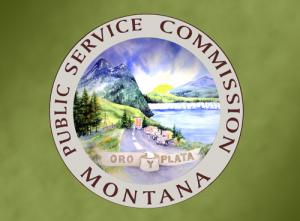Montana Shortens Contract Term for Small Power Producers

Finding that evolving energy policies and objectives no longer supported long-term power purchase agreements (PPAs) of up to 25 years in duration, the Montana Public Service Commission has acted to cap the length of PPAs entered into by NorthWestern Energy (NWE), the state's largest electric utility. The commission thus reduced to a maximum of 10 years the term of the utility's renewable power contracts.
Relating that longer PPA lengths are "excessively risky" for customers because they tend to be subject to substantial forecasting error, the commission posited that the shorter contract period would better balance the goal of promoting the development of alternative power resources against the interest ratepayers have in economical rates. It made the ruling while setting a new standard avoidedcost rate that the utility must pay for power purchased from small renewable energy projects of up to three megawatts of capacity.
Notably, the commission's decision applies to both independent power producers and utility-owned generating assets. The commission pointed to its previous findings that there is no persuasive evidence that the forecasted market risk of a longterm PPA with an independent power producer differs significantly from the risk associated with a utilityaffiliated generating resource. The commission therefore told NWE that going forward, any resource the utility acquires must be subject to the same standard.
Consequently, the commission ruled that if NorthWestern buys or builds a power plant or enters into a contract with any power supplier for the purpose of serving its retail customers, it must demonstrate that the costs of energy and capacity therefrom are justified relative to a 10-year projection of market prices or the cost of alternative 10-year sources of power supplies.
In deciding to decrease the maximum contract term for renewable power sales, the commission observed that low prices for wholesale power that appear in near-term market forecasts relative to previous predictions suggest that the market is increasingly saturated with energy. It found as well that under current contracting norms, price escalators in outer years serve to inflate those prices. However, those higher prices are unlikely to actually occur if the current trend of oversupply continues, the commission said.
The commission added that while it gives a great deal of consideration to the evaluation of the appropriate escalators, they are in the end hypothetical. That is, it stated, the very use of them for a multi-decade contract improperly shifts the forecasting risk to consumers rather than the parties who invested in the power projects.
The commission noted that regulatory authorities in both Idaho and North Carolina had recently deemed 20-year contracts to be unreasonable and inconsistent with the public interest. It also found that the best way to assure that avoided-cost rates remain accurate is through successive contracts of shorter duration, which would not risk violating federal regulations nor unreasonably burden customers.
The commission highlighted the fact that shortening the term of PPAs was not intended to inhibit a renewable power developer's ability to recover its investment. Rather, the commission said, the shorter term merely functions as a means to ensure avoided costs remain just and reasonable and in the public interest over the long term.
Under the new avoided-cost rate schedules set by the commission, payments to solar-powered qualifying facilities (QFs) are broken up into two separate periods. During those times when energy demand is high, NorthWestern must pay $31.54 per megawatt-hour (MWh). But when demand drops off, the rate drops as well, to $23.32 per MWh.
The commission stated that the rate also includes a separate payment of $9.10 per MWh to be made during heavy load hours in December, January, February, July, and August in order to compensate QFs for the added capacity that they provide to the utility system. At the same time, though, the commission declined to also add a carbon dioxide emissions adjustment to the avoided-cost estimates used in setting standard offer rates.
According to the commission, inclusion of carbon costs in avoidedcost calculations would unnecessarily expose customers to risk, inasmuch as carbon emissions are not currently priced and any future pricing is highly uncertain. Although the commission acknowledged that similar adders had been used in the past in avoidedcost calculations, it said it would be prudent to take a more measured approach at the current time, in light of the change in presidential administrations.
The commission stated that "the political forces that once indicated environmental regulatory action at the federal level was likely in the reasonably foreseeable future has diminished." Re NorthWestern Energy, Docket No. D2016.5.39, Order No. 7500c, June 22, 2017 (Mont.P.S.C.).



